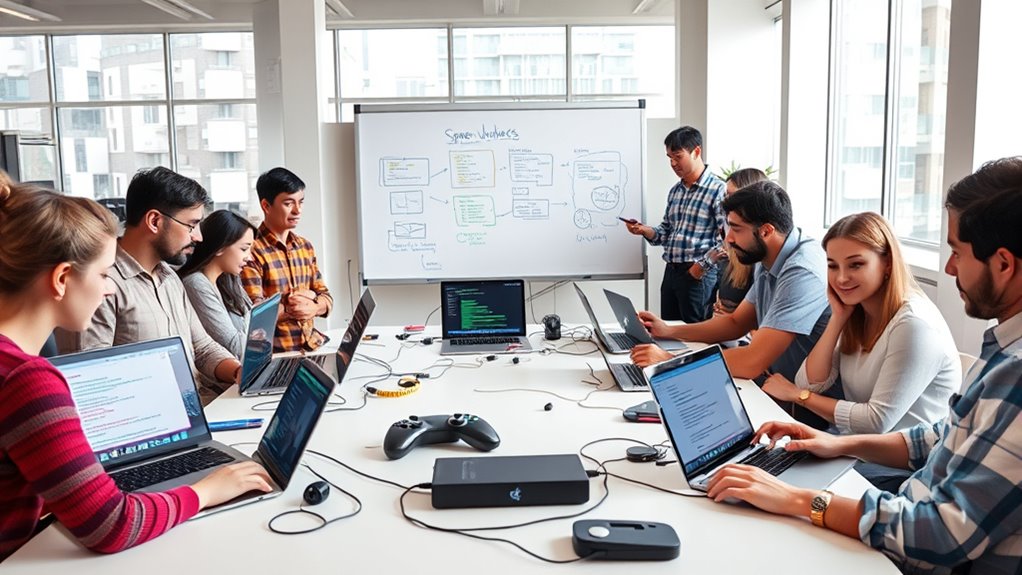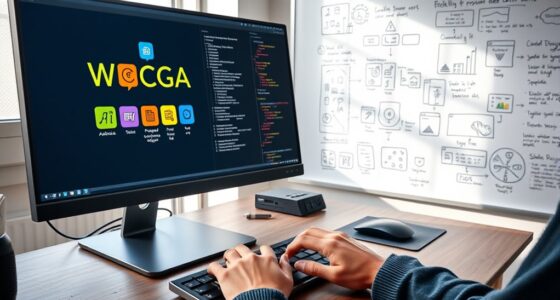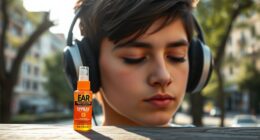You can contribute to open-source accessibility models today by engaging with projects like Mozilla’s Common Voice, which gathers diverse speech data, or improving NVDA screen reader’s voice synthesis and keyboard navigation. You can also support secure messaging via the Signal protocol or help shape web standards through the Web Accessibility Initiative. Additionally, you can assist in developing captioning tools or testing accessibility scanners. Keep exploring these options to discover more ways you can make a difference now.
Key Takeaways
- Contribute to Mozilla’s Common Voice for improving voice recognition and accessibility features across diverse languages and speech patterns.
- Participate in enhancing secure messaging protocols like the Signal Protocol to ensure privacy and encryption for all users.
- Help improve screen readers such as NVDA by testing voice synthesis and refining navigation and usability features.
- Join Web Accessibility Initiative (WAI) projects to shape global standards like WCAG and promote inclusive digital content.
- Develop and test open-source tools for multilingual captioning, accessibility audits, and assistive technology integration.
Exploring the Accessibility Features of Mozilla’s Common Voice
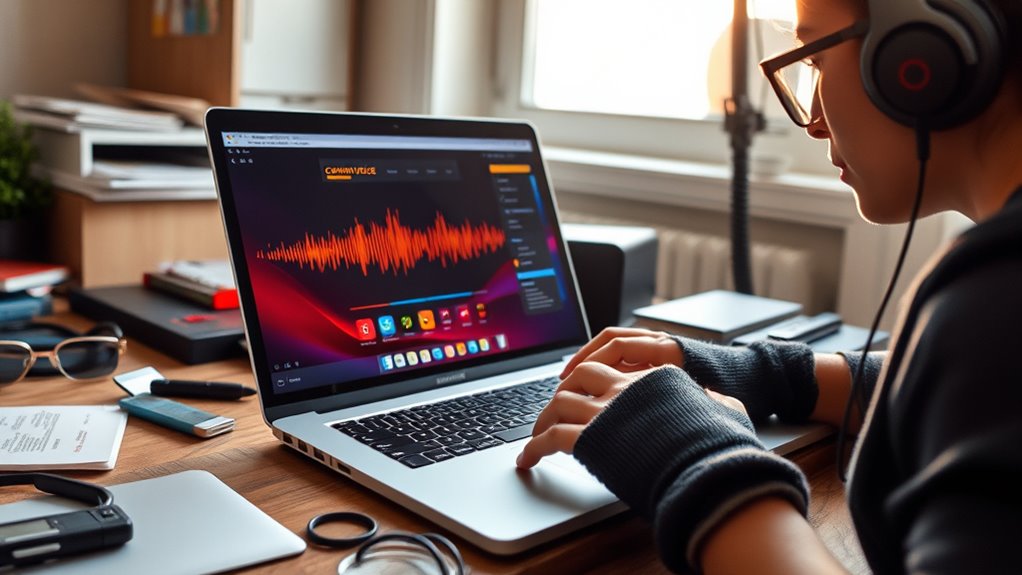
Mozilla’s Common Voice is designed to make voice technology more inclusive by prioritizing accessibility features. Its robust voice recognition system is built to understand diverse accents and speech patterns, promoting wider usability. The project adheres to strict accessibility standards, ensuring that people with speech impairments can also benefit from voice interaction. By collecting voice data from a global community, Common Voice helps improve the accuracy of speech recognition for underrepresented languages and dialects. This open-source platform invites contributors to enhance its datasets, making voice technology more equitable. Additionally, incorporating feedback mechanisms helps identify and address accessibility barriers, ensuring continuous improvement. Through these efforts, Mozilla aims to create a more accessible voice recognition experience that serves all users, regardless of their physical abilities or language background.
Contributing to the Signal Protocol for Secure Communications
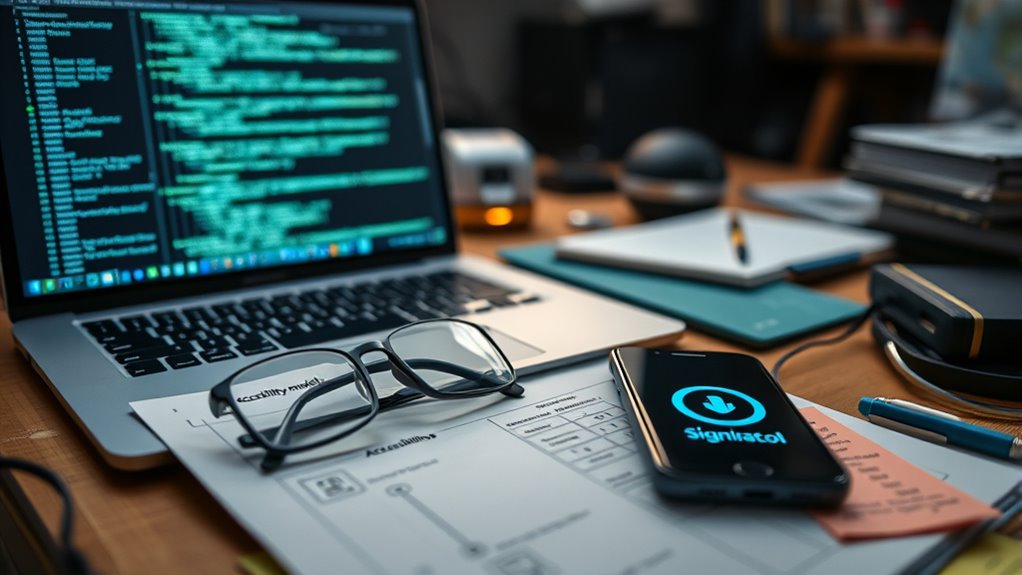
Building on the foundation of open-source accessibility, contributing to the Signal Protocol offers a way to enhance secure communication for everyone. By participating, you help improve end-to-end encryption, ensuring messages stay private between users. Your contributions can include refining cryptographic algorithms, fixing bugs, or enhancing protocol features that prioritize user privacy. Open-source projects like Signal thrive on community input, so your expertise can directly impact how securely people communicate worldwide. With a focus on protecting user privacy, your work helps prevent eavesdropping and data leaks. Whether you’re a developer or a security enthusiast, contributing to the Signal Protocol empowers you to make a tangible difference, making confidential communication accessible and safe for all users.
Improving Accessibility in the NVDA Screen Reader
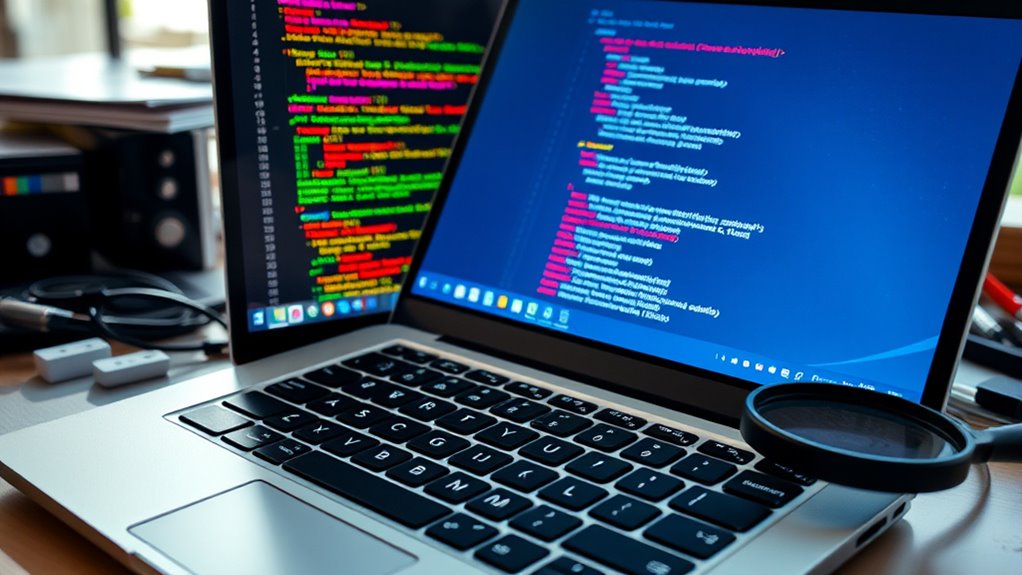
Enhancing accessibility in the NVDA screen reader involves identifying and addressing barriers that prevent users with disabilities from traversing digital content effectively. One key area is improving voice synthesis, making speech output clearer, more natural, and customizable for diverse needs. You can contribute by testing different voice engines, providing feedback to optimize pronunciation and intonation. Accessibility testing plays a crucial role—regularly evaluating NVDA’s features helps uncover issues and refine usability. By participating in these tests, you ensure the screen reader adapts to real-world scenarios, helping users navigate complex interfaces seamlessly. Incorporating essential oils into wellness routines can also promote relaxation and focus during testing sessions, enhancing overall productivity. Your contributions help create a more inclusive digital environment, ensuring NVDA remains a powerful, user-friendly tool for individuals with visual impairments or other disabilities.
Participating in the Web Accessibility Initiative (WAI) Projects

By participating in WAI projects, you can directly influence accessibility standards and best practices. You can contribute to WCAG guidelines or join working groups to collaborate with experts. Your involvement helps shape more inclusive digital experiences for everyone. Engaging with these initiatives also allows you to learn about color accuracy, which is essential for creating accessible and visually appealing digital content.
Subheading 1: Contribute to WCAG Guidelines
Participating in the Web Accessibility Initiative (WAI) projects offers a direct way to shape the guidelines that improve digital accessibility worldwide. By contributing, you help guarantee WCAG (Web Content Accessibility Guidelines) promote Universal Design principles and support Assistive Technologies. Here are three ways you can get involved:
- Provide feedback on draft guidelines to enhance clarity and effectiveness.
- Share insights from your experience with diverse assistive tools and user needs.
- Collaborate on testing new standards to ensure they support a wide range of disabilities.
- Understand the importance of Hamster Care Costs and other practical considerations that can inform accessible content design.
Your input helps create more inclusive online environments, making digital content accessible to everyone. Contributing to WCAG guidelines not only advances universal accessibility but also promotes innovative solutions compatible with assistive technologies.
Subheading 2: Participate in Working Groups
Getting involved in WAI working groups allows you to directly influence the development of accessibility standards and practices. By participating, you contribute to inclusive design solutions that benefit diverse users. Your collaboration fosters community engagement, ensuring standards reflect real-world needs. Working groups focus on shared goals, combining expertise to improve web accessibility globally. Your input helps shape policies and technical guidelines, promoting equitable access for all. Through active involvement, you become part of a community committed to advancing digital inclusion. Below is a table illustrating common WAI working groups and their focus areas:
| Working Group | Focus Area |
|---|---|
| Accessibility Guidelines (AG) | Developing WCAG standards |
| Education & Outreach (EOWG) | Raising awareness, training |
| Tools & Testing (UAWG) | Creating evaluation tools |
| Research & Development (RDRWG) | Innovative accessibility tech |
| Community Engagement (CEWG) | Promoting inclusive design |
Enhancing Open-Source Captioning Tools Like Aegisub
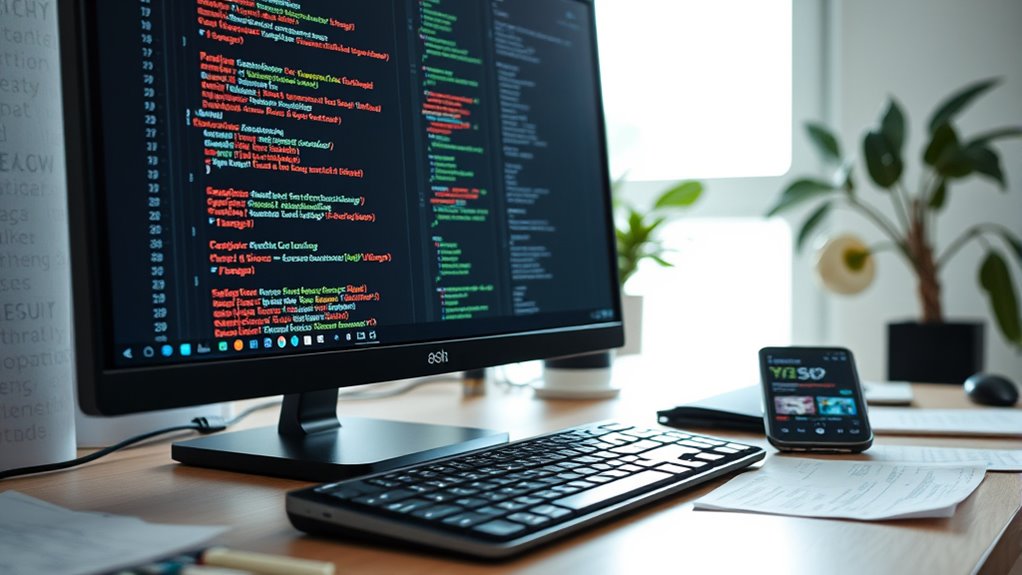
To improve open-source captioning tools like Aegisub, you should focus on boosting speech recognition accuracy to make transcripts more reliable. Simplifying the user interface will help more users navigate and customize captions easily. Additionally, expanding language support guarantees these tools serve a broader, more diverse audience. Incorporating Honda Tuning techniques can also inspire innovative features for optimizing user workflows and interface responsiveness.
Improving Speech Recognition Accuracy
Enhancing speech recognition accuracy is essential for improving open-source captioning tools like Aegisub, as it directly impacts the quality and reliability of automated subtitles. To achieve this, consider these strategies:
- Use machine learning algorithms that adapt to diverse accents and speech patterns for better recognition.
- Incorporate user feedback loops to identify errors and refine the system continuously.
- Train models on large, diverse datasets to improve contextual understanding and reduce misinterpretations.
- Implement quality control measures to ensure ongoing system performance and accuracy improvement.
Streamlining User Interface Design
Streamlining user interface design is essential for making open-source captioning tools like Aegisub more accessible and efficient. You can improve navigation by optimizing keyboard navigation, allowing users to move seamlessly through menus and options without a mouse. Clear, consistent focus indicators help users understand where they are within the interface. Additionally, enhancing color contrast between text, buttons, and backgrounds ensures visual clarity for users with visual impairments or color vision deficiencies. Simplifying layouts, reducing clutter, and providing customizable interface options make the tool more user-friendly. By prioritizing keyboard navigation and color contrast, you make Aegisub more inclusive, enabling a broader range of users to create and edit captions effectively and comfortably. Incorporating comprehensive accessibility features can further improve usability for all users.
Expanding Language Support
Expanding language support in open-source captioning tools like Aegisub opens the door to a more inclusive user experience. By integrating multiple languages, you enhance assistive technology and promote inclusive design, making content accessible worldwide. To contribute effectively, consider these steps:
- Translate existing code and interfaces to accommodate new languages, ensuring clarity and cultural relevance.
- Implement multilingual captioning algorithms that accurately capture linguistic nuances, aiding diverse users.
- Collaborate with language experts to improve translation quality and ensure the tool serves a global audience.
- Focus on vetted language support, ensuring that the additions are both safe and effective for users across different regions.
Your efforts help break language barriers, making captioning tools more accessible and effective for everyone. Open-source projects thrive on this kind of contribution, fostering a more inclusive digital environment.
Supporting the Development of Triage and Testing Tools for Accessibility
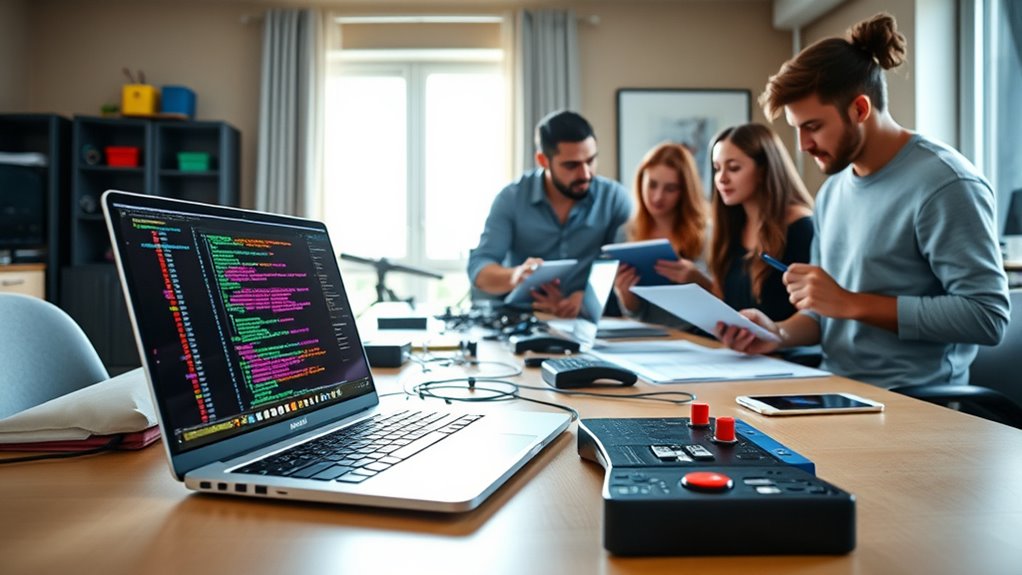
Developing effective triage and testing tools for accessibility is vital to guarantee digital content meets diverse user needs. These tools help identify barriers early, allowing you to prioritize fixes efficiently. By integrating assistive technology, you ensure compatibility and usability for all users. Gathering user feedback is essential, as it offers real-world insights into accessibility issues. Contributing to open-source testing tools enables continuous improvements and collaborative innovation. Here’s a table highlighting key areas:
| Focus Area | Example Initiatives |
|---|---|
| Automated Testing | Accessibility checkers and scanners |
| User Feedback Integration | Surveys, bug reports, user testing |
| Assistive Technology Support | Screen readers, magnifiers |
| Triage Processes | Issue prioritization frameworks |
| Community Collaboration | Open-source projects, forums |
Your contributions improve tools that serve everyone better. Additionally, understanding market trends and insights can inform your development priorities and ensure the tools remain relevant in evolving digital environments.
Frequently Asked Questions
How Can I Start Contributing to Open-Source Accessibility Projects With Minimal Experience?
You can start contributing to open-source accessibility projects even with minimal experience by focusing on accessible design and user testing. Begin by exploring beginner-friendly repos on platforms like GitHub, and read their contribution guidelines. Practice reviewing and testing interfaces for accessibility issues, offering feedback based on your observations. Your efforts in accessible design and user testing help improve usability for everyone, making a meaningful impact in open-source communities.
What Licensing Models Are Commonly Used for Open-Source Accessibility Tools?
Think of open-source licenses as the rules of the road for collaboration. You’ll mostly see licenses like MIT, Apache, and GPL—each with different levels of license compatibility and permissions. MIT and Apache are permissive, allowing broad reuse, while GPL enforces stricter rules to keep things open. Understanding these open source licenses helps you select models that match your project’s goals and guarantee license compatibility for smooth collaboration.
How Do I Ensure My Contributions Meet Accessibility Standards and Guidelines?
To guarantee your contributions meet accessibility standards, start with thorough accessibility testing to identify issues early. Incorporate user experience design principles that prioritize inclusivity and usability for all users. Stay informed on guidelines like WCAG and ADA, and regularly review updates. Collaborate with diverse users for feedback, and document your compliance efforts. This proactive approach helps create accessible, user-friendly tools that serve everyone effectively.
Are There Funding Opportunities for Open-Source Accessibility Development?
You’ll be amazed at how many funding opportunities are out there for open-source accessibility development! You can explore grant opportunities from organizations like the Mozilla Foundation or Google.org, which support innovative accessibility projects. Sponsorship programs from tech companies and nonprofits also provide essential resources. Keep an eye on these options, and don’t hesitate to apply — your contributions can make a real difference, and funding can help turn your ideas into reality.
How Can Organizations Collaborate on Open-Source Accessibility Initiatives Effectively?
You can enhance collaboration by fostering strong community engagement and building cross-sector partnerships. Reach out to diverse stakeholders, including tech companies, nonprofits, and end users, to gather insights and share resources. Encourage transparent communication and joint goal-setting to guarantee everyone’s needs are addressed. Regular meetings, collaborative platforms, and shared accountability help sustain momentum and create a unified effort toward accessible open-source solutions.
Conclusion
By contributing to open-source accessibility projects, you empower users, enhance inclusivity, and drive innovation. You improve communication, break down barriers, and create equal opportunities. You support voices that need to be heard, bridge gaps that divide, and inspire change that lasts. Your involvement matters—your code, your passion, your action. Together, you can shape a more accessible world, where everyone has the tools to thrive and succeed.

